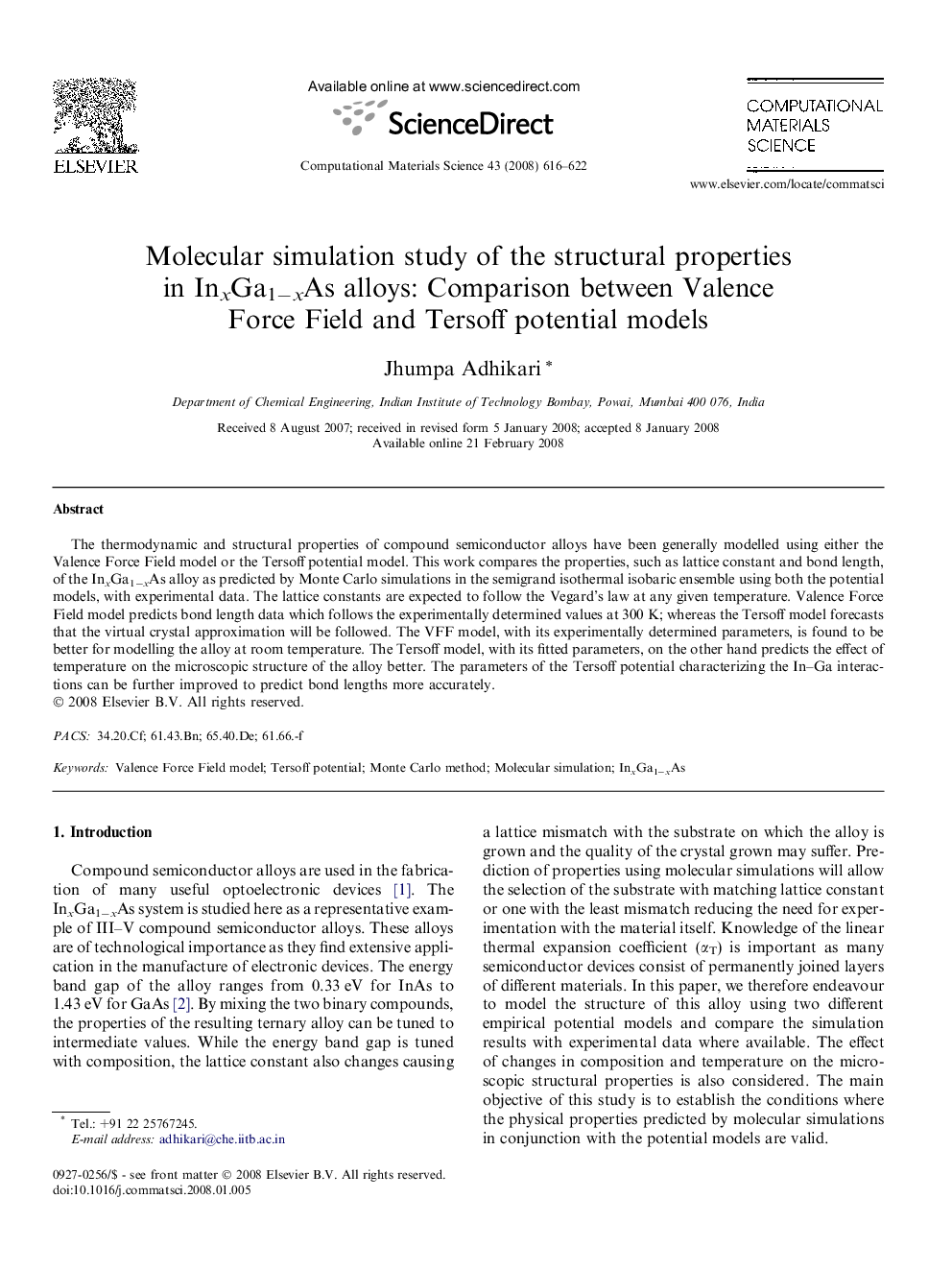| Article ID | Journal | Published Year | Pages | File Type |
|---|---|---|---|---|
| 1563268 | Computational Materials Science | 2008 | 7 Pages |
The thermodynamic and structural properties of compound semiconductor alloys have been generally modelled using either the Valence Force Field model or the Tersoff potential model. This work compares the properties, such as lattice constant and bond length, of the InxGa1−xAs alloy as predicted by Monte Carlo simulations in the semigrand isothermal isobaric ensemble using both the potential models, with experimental data. The lattice constants are expected to follow the Vegard’s law at any given temperature. Valence Force Field model predicts bond length data which follows the experimentally determined values at 300 K; whereas the Tersoff model forecasts that the virtual crystal approximation will be followed. The VFF model, with its experimentally determined parameters, is found to be better for modelling the alloy at room temperature. The Tersoff model, with its fitted parameters, on the other hand predicts the effect of temperature on the microscopic structure of the alloy better. The parameters of the Tersoff potential characterizing the In–Ga interactions can be further improved to predict bond lengths more accurately.
